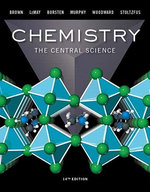?The naturally occurring radioactive decay series that begins with \({ }_{92}^{235} \mathrm{U}\) stops with formation of the stable \({ }_{82}^{207} \m
Chapter 21, Problem 21.17(choose chapter or problem)
The naturally occurring radioactive decay series that begins with \({ }_{92}^{235} \mathrm{U}\) stops with formation of the stable \({ }_{82}^{207} \mathrm{~Pb}\) nucleus. The decays proceed through a series of alpha-particle and beta-particle emissions. How many of each type of emission are involved in this series?
Text Transcription:
{92}^{235} U
{82}^{207} Pb
Unfortunately, we don't have that question answered yet. But you can get it answered in just 5 hours by Logging in or Becoming a subscriber.
Becoming a subscriber
Or look for another answer
